#searching for the primal connection and sacred patterns in life
Explore tagged Tumblr posts
Text


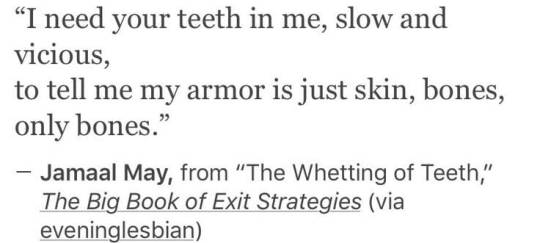
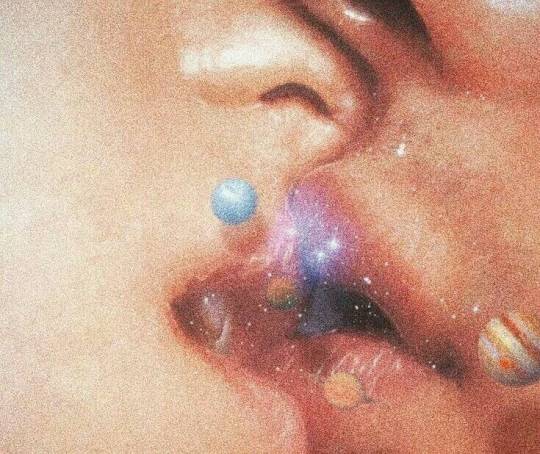






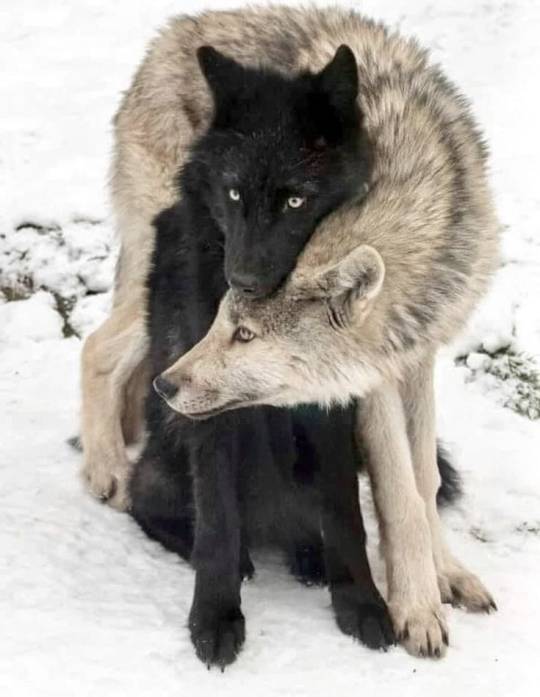

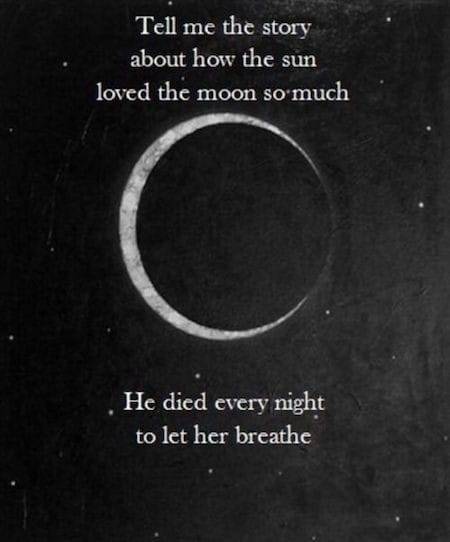


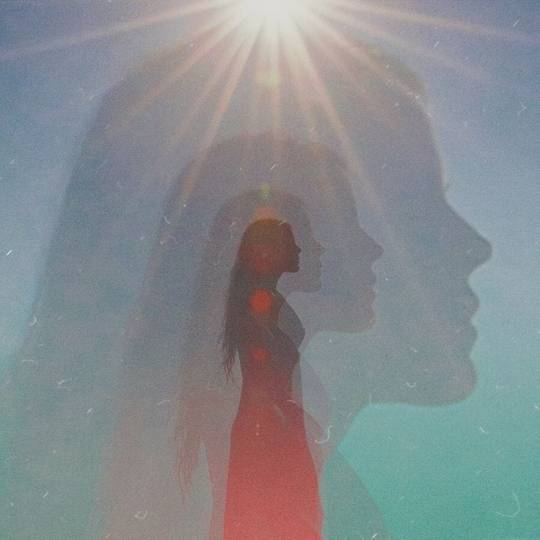
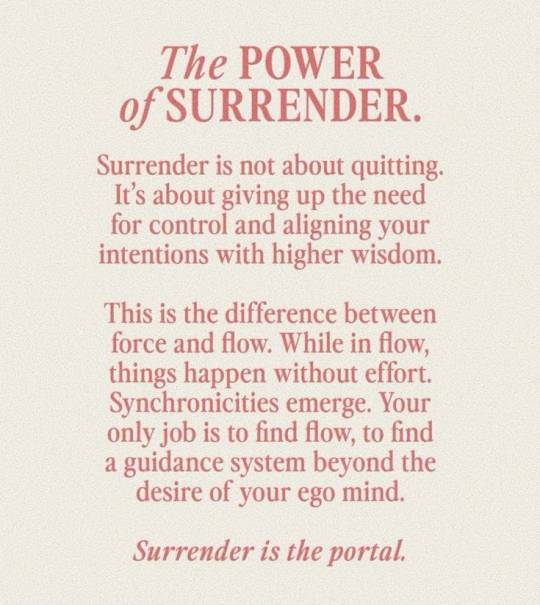
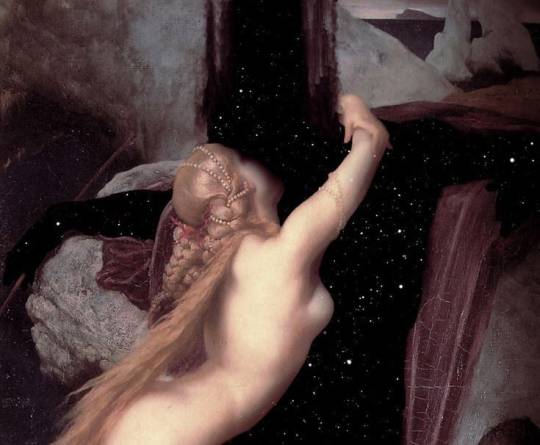
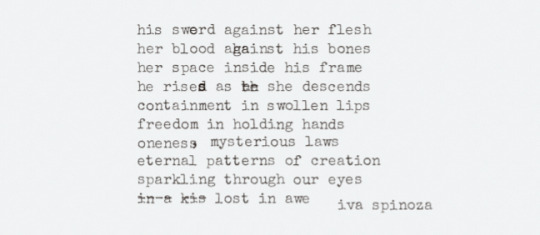
the dualitiy that exploded in the beginning
#love#made for love#made for devotion#devotion#femme#masculine#duality#yin yang#divine#divine feminine#divine masculine#fallen stars#so much we are not ready to learn#surrender#submission#why do u think people have kinks#searching for the primal connection and sacred patterns in life#we are born crying because we are already looking back home#wombs are portals and i mean this literally#wake up world they are stealing all the beauty and truth to keep you their little slave#easy to control when you are afraid#time to go step on the grass and let the sun kiss my skin#webweave#web weaving
37 notes
·
View notes
Text
Look at this... 👀
Look at this... 👀 https://pin.it/SnTnLNh

TRANSFORMATIONS BY OBSIDIAN BUTTERFLY
Home | Articles | Writing | Offerings | Art | Links
Mayan-Aztec Calendar site | Jaguar Nights Mayan-Aztec Calendar site
Mon 15 Feb 202113.0.8.4.185 Etznab1 Kayab
search Obsidian Butterfly
Share:     Follow:        Contact:  
HOW TO LIVE MULTI-DIMENSIONALLY THROUGH SACRED GEOMETRY
Adapted from a lecture at the Astrological Society of Connecticut
19 August 2012
All the graphics are originally from the two volumes of the Ancient Secret of the Flower of Life (c) by Drunvalo Melchizedek, although I have altered them in many cases (for instance, I created the looping gif, and the multicolored Flower of Life sphere, and colored the merkaba positions).
Sacred Geometry is not what you learned sophomore year of high school. This is something much different and much more fun. Sacred Geometry is the organizational basis of all that exists, has existed and will exist. Found within these patterns are both two and three dimensional shapes which carry archetypal memories.

This is a very brief introduction to what Sacred Geometry is and how you can use these concepts to expand your consciousness. The basic form of sacred geometry is called the Flower of Life. It is a beautiful interlocking series of circles. Each circle’s circumference crosses other circles’ center points.
You can draw the Flower of Life yourself, using a high quality compass. The basic steps look like this, with the finished product (usually illustrated with a double circle as a frame) in the lower right.
The eye-shaped space in between each set of circles has its own meaning. One circle represents universal consciousness, the gold/solar source, and unchanging archetypes linked with, in the other circle, empirical consciousness, the silver/lunar reflection, and the changing realm of the senses, through the eye-shaped center that encompasses balanced human consciousness.
The curved lines of the Flower of Life promote feminine, right-brained thinking. When you apply the straight lines of Metatron’s Cube (connecting all the centers), you add in the left-brained, masculine thinking. So if you need to concentrate more on one type of thinking or the other, or you feel unbalanced, you can meditate on either the curved shape, the straight line shape, or the combination.
I call this Flower of LIfe figure “the mother of sacred geometry” because every important shape can be found within it, including the five Platonic Solids, named for the great Greek philosopher Plato. It is an ancient symbol which has been found all over the ancient world.

The five Platonic Solids are the tetrahedron, the cube (hexahedron), the octahedron, the dodecahedron, and the icosahedron. If you have ever been involved with role-playing games, these will be familiar to you, as the shapes of the dice.
To find the 5 shapes within the Flower of life, you extract a shape called Metatron’s Cube. You select these 13 circles from the Flower of Life shape—this is called the Fruit of Life—and then join all the centers with 78 straight lines to make Metatron’s Cube. This ancient shape, named for an angel, has been used to ward off evil and can be carried as a talisman.
From within Metatron’s cube, you can find the five Platonic Solids:
Tetrahedron

Cube (hexahedron)

Octahedron

Dodecahedron

Icosahedron

The 5 Platonic solids are ideal, primal models of crystal patterns that occur throughout the world of minerals in countless variations. These are the only five regular polyhedra, that is, the only five solids made from the same equilateral, equiangular polygons. They have the same face shape on every side and only 1 angle per edge. All other shapes have different faces and/or angles. Also, if you spin any of these 5 shapes around its center point, its corners will describe a perfect sphere. The Platonic Solids occur in the crystal world. Working with them connects us to nature and the higher realms of the cosmos, especially those attributes associated closely with each polyhedron.
Each of these shapes has metaphysical properties, making them valuable tools for meditation and rituals.
The Tetrahedron is the four-sided pyramid. Each side is a triangle. (The pyramids of Egypt, Central America & elsewhere are five sided pyramids--four sloping triangular sides and a flat square/rectangular base.) It represents the powers of manifestation & creation, the element of Fire, the color Red and the Solar Plexus (third) chakra. Can help you burn through problems. It is masculine.
The Cube (Hexahedron) is the six-sided box. Each side is a square. It grounds the creation of the Tetrahedron into the physical realm. It represents the element of Earth, the color Green and the Base (first) chakra. Use for grounding. It is masculine.
The Octahedron is the eight-sided diamond. Each side is a triangle. It represents love, the heart and compassion, integration, the 8-fold path to Enlightenment, the element of Air, the color yellow and the Heart (4th) chakra. It can help you move forward. It represents your inner child.
The Dodecahedron is the twelve-sided ball with the pentagon faces. It represents the 12 faces of the God/dess within, Ascension, Mystery school teachings, the color Gold, the element Ether/Spirit and the higher chakras (8-12 and up). It connects you to the universal life force. It is female.
The Icosahedron is the twenty-sided ball with the triangular faces. It represents prayer, transformation, the color blue, the Naval (2nd) chakra and the element Water. It can help you sustain focus and momentum. It is female.
Each of the five Platonic solids carries special teachings. The tetrahedron invokes the power of manifestation and the cube grounds that creation in our bodies and this reality. Our core heart is found in the octahedron as an expression of selflove and compassion. Prayer is invoked in the form of the icosahedron. The twelve faces of 'God within' are discovered in the dodecahedron.
Four of the five platonic solids embody the number thirteen. The cube and octahedron have twelve edges or lines surrounding one center. The icosahedron has twelve corners around one and the dodecahedron has twelve faces around one.
The only solid not supporting this is the tetrahedron and when two tetrahedrons are joined (star tetrahedron) there are twelve edges around one. More about the star tetrahedron in a moment.
Platonic Solid
Edges
Corners
Faces
Total
Numerology
Tetrahedron
6
4
4
14
5
Cube
12
8
6
26
8
Octahedron
12
6
8
26
8
Icosahedron
30
12
20
62
8
Dodecahedron
30
20
12
62
8
Star Tetrahedron
12
8
8
n/a
n/a

There is a 6th mystical shape, also found within Metatron’s cube. This is the star tetrahedron, made up of 2 tetrahedrons. This powerful shape is also called a Merkaba. It is basically a 3 dimensional Star of David. It contains within it the geometry of the cube, the octahedron and the tetrahedron. The word Merkaba, in ancient Egyptian, is translated as MER: rotating fields of light, KA: spirit, and BA: soul and in Hebrew it means 'chariot'.
Everyone knows about auras. You can get the colors of your aura photographed or looked at by a psychic. What a lot of people don’t know is that your aura is not really a shapeless blob. It’s the shape of a star tetrahedron. Three of them, actually.
Stand up straight. Hold out your arms. Your static field is a hand’s width past the edge of your finger tips and the top point of that field is one hand’s width above your head and the bottom of that field is one hand’s width below your feet. These are your hands’ widths so for each person it’s slightly different.
Running from top to bottom is a tube, the pranic tube, which carries energy from both earth and sky into your physical body. It is as big as the circle made by your thumb and forefinger. The top of the pranic tube is your soul star chakra, and the bottom of your pranic tube is your earth star chakra. These lead into your crown and root chakras (which also point straight up and down, unlike the other five, which point front and back). Your root and crown chakras are actually two ends of the same tube, and the energy running through it is changed as it passes the other 5 horizontal chakras.
The alignment of the static star tetrahedron in your aura depends on your gender. If you are male, the point of the sun tetrahedron (yellow, in the drawing) is in front of you, the flat part behind you. If you are female, the flat part of the sun tetrahedron is in front of you and the point behind you. These star tetrahedrons do not rotate. They represent your physical body and are neutral.
There are two more star tetrahedrons in your aura. (The term “merkaba” refers to all 3 of these star tetrahedrons together.) One star tetrahedron is male and electrical in energy and it rotates counter clockwise (to the left), and relates to your mental/logical thinking. The other star tetrahedron is female and magnetic and it rotates clockwise (to the right) and relates to your emotional thinking.

Meditating with the merkaba activates the left and right brain together, raising your consciousness level. It brings dualities into balance—male and female; heaven and earth; everything that is yin and that is yang. You can, with practice, use the Merkaba field to lift your consciousness to higher realms.
When you meditate and use any kind of breathing method, you should be aware of the breath and energy going in through both ends of the pranic tube and meeting in your heart. It’s almost like pumping up your heart, it gets bigger and bigger with each breath until it explodes into light from all the combined energies of earth and sky. When you visualize that happening and you’re working with the merkaba, the ball of light that surrounds you should look like a flower of life sphere in rainbow colors.
Crystal Grids and Sacred Geometry
One of the many things you can do with all these wonderful shapes is make crystal grids. This is a layout of crystals chosen for a specific purpose, placed in sacred geometry-based patterns to connect, clear, amplify, generate and re-direct energy. Crystal grids help to better formulate and ground intent, then assist to spread and manifest the sole purpose of that intent. Working with crystals and sacred geometry together can raise our vibration, clear physical and emotional blockages, expand our perception and reconnect us with Source.
You can use as the base the whole Flower of Life shape, and place a crystal on each line crossing. Or you can use a Metatron’s cube and concentrate on whichever of the Platonic Solid shapes (or the Star Tetrahedron) you feel the need to connect to. You can purchase sets of Platonic Solid crystal shapes and Star Tetrahedrons to use in the grids (or just hold the single shape you need). You can make permanent grids by gluing the crystals in place and keep them in your car or in certain places in your home, as needed. Build them with a clear intention and purpose in mind.
Star Tetrahedron grids are multipurpose. If you want to concentrate energy, and bring energy in from above and below, point the crystals toward the center. If you want to spread energy over a large area, point the crystals outward.
This is a quickie grid I put together for this lecture, using a star tetrahedron in Metatron's Cube. In the center is a large amethyst star tetrahedron (which is for sale! contact me) surrounded by long singing laser quartz crystals and small Herkimer-type quartz.
No matter what shape you use, activate the grid in the same way. Join up all the crystals in the pattern you laid, using your finger, a special crystal, or a wand. Do it 3 or 9 times, concentrating on bringing energy in from above and below, and putting the energy toward whatever purpose you built the grid. If you know Reiki or anything similar use that energy as well to program and empower the grid.
Looping animation of Metatron's Cube,
the Platonic Solids and the star merkaba:

You can build them for healing yourself or for healing someone else, for protection, or any other positive thing you can think of. You can put a piece of paper under the grid with the person’s name or photo, or with your affirmation written out (always phrased in the present time, and with gratitude).
You should recharge and empower the grid at least once a day until it has served its purpose and then take it apart, and cleanse the crystals, freeing them of the programming.
I offer for sale sets of crystal Platonic solids and loose merkaba crystals of all sizes, from $10 up. There is no page for these; contact me if you're interested.
All the fold-up Platonic Solid & star tetrahedron patterns below are (c) by Bruce Rawlins from his excellent Sacred Geometry Sourcebook, which I HIGHLY recommend. They are all PDFs requiring the free Adobe Reader.
Star Tetrahedron fold up
Tetrahedron fold up
Hexahedron fold up
Octahedron fold up
Dodecahedron fold up
Icosahedron fold up
Here is the promo video I created to loop on my tablet and advertise the talk:
All material on this site is copyright (c) by Gevera Bert Piedmont except where noted. All rights reserved. Contact me for permission to republish. Information on this site is for entertainment purposes only. Enjoy! })i({
Page created: 12.19.19.16.8 11-Yaxkin 3-Muluc (12 August 2012)
Page modified: 13.0.0.16.6 5-Cimi 4-Ceh (12 November 2013)

6 notes
·
View notes
Text
Skarner, The Crystal Vanguard
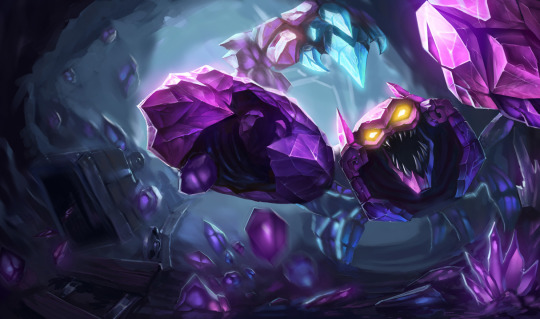
Skarner is an immense crystalline scorpion from a hidden valley in Shurima. Part of the ancient Brackern race, Skarner and his kin are known for their great wisdom and deep connection to the land, as their souls are fused with powerful life crystals which hold the living thoughts and memories of their ancestors. In an age long past, the Brackern entered hibernation to avoid untold magical destruction, but recent, threatening events have roused Skarner. As the only Brackern awake, he strives to protect his kind from those who seek to harm them.
Long before men traversed the scorched deserts of Shurima, the very sand itself shone with primal, unchained magic. In a remote valley surrounded by steep cliffs and jagged rock formations, the age-old race of Brackern unearthed raw crystals from deep within the sand. Each of these noble creatures fused with a single stone, which retained their consciousness long after their death.
The demise of a Brackern was a rare occurrence, as their worldly lives stretched across millennia, but even death did not signify an ending. When a creature’s mortal form perished, its life stone was buried in the valley for safekeeping until a new Brackern could uncover it. This practice protected the vulnerable crystals while preserving the wisdom of the ones who came before.
With a finite number of stones, the young Brackern searched for the crystal meantfor them, just as the consciousness within the stone beckoned to the Brackern it had chosen to inherit its magic and memories. In a sacred rite, the rock fused with crystalline flesh, imbuing the creature’s mind with memories and knowledge and flooding them with primal magic. A Brackern without a crystal would not long survive, for they lacked the strength, longevity, and power instilled by the stones.
The young creature named Skarner spent many years searching for the crystal meant for him. Afraid he would die before finding it, he grew more persistent in his search with each passing moon. Day and night, he delved deep into the ground, digging in a methodical pattern that covered the entire valley and neighboring hills with intricate spirals.
Skarner had all but given up when he finally felt an ancient consciousness tugging at his mind. He burrowed down, venturing ever deeper until the world’s heart warmed his shell. Days passed, but the consciousness grew ever more insistent as it urged him onward. Skarner’s pincers closed on a well-worn stone, and he heard a rasping whisper at the back of his mind. Though the voice was faint, he already felt intimately connected to its awareness, and he knew he had found his stone.
The crystal was larger than any he had seen and so timeworn that its glow had faded to a soft glimmer. Its surface was cracked in several places and dulled from eons buried under the ground. Skarner examined the rock with the tenderest touch, afraid of further damaging something so ancient. The dim glow within pulsed as though breathing in response to Skarner’s presence.
Skarner began the bonding ritual, burying himself deep underground with the crystal for weeks without sustenance. Though he ached with fatigue and his limbs atrophied in starvation, he was not afraid, for the voice within the stone comforted him. When the crystal finally fused with his body, he was overwhelmed with emotion as ancient memories and wisdom permeated his thoughts. He witnessed moments of incredible joy and crushing sorrow from generations long deceased. He felt magic all around him, suffusing his body with a deep connection to the world through a low constant hum, and sensed his kind communicating in a wordless meeting of minds.
When the cataclysmic forces of the Rune Wars began to devastate the world, the Brackern feared the turmoil would soon mark the end of their species. They resolved to hide in hibernation until humans wiped themselves out, as it seemed certain they would. Only then would it be safe to emerge from the sands once more.
The crystalline scorpions buried themselves deep in the Shuriman desert with the youngest and most ferocious positioned closest to the surface, ready to awaken first and defend the others in case of danger. The strength Skarner gained from his ancient life stone made him more powerful than almost all of his kin, so he was one of the last of his kind to enter the long slumber.
They slept in peaceful isolation as centuries passed before Skarner awoke from his shallow burrow in a panic. Deafening explosions shattered the ground, targeting the Brackern where they lay sleeping and stunning those closest to the surface. A band of robbers had discovered the dormant creatures and were prying crystals from crystalline flesh. Skarner, protected from the brunt of the attack by his crystal, erupted from the sand in a terrible frenzy of sharp pincers and poisonous stabs. Though their numbers all but overwhelmed him, he killed many of the thieves, and the rest fled in terror. Skarner was horrified to learn he was the only one awake, and that many of his people’s crystals had already been stolen.
Skarner tried to revive his dormant companions, but the men had broken so many life stones in their thoughtless theft that several Brackern with damaged crystals died moments after Skarner woke them, while others would not wake at all. For weeks Skarner paced the sand above his sleeping brethren in sorrowful mourning. He was certain the crystals would quickly perish in the hands of men, and mourned their loss too.
Yet as the sun broke over the horizon many weeks later, Skarner heard distant echoes calling in his mind. The cries were faint, but rang clear over the land. These voices of the lost stones reached out to him in terror, imploring Skarner to reconnect them with their kind. Skarner hesitated, torn as to whether he should rescue the lost crystals or continue guarding the still-living Brackern. After weeks spent erasing all traces of the excavation, he could not stand to hear the minds of his kin suffering at the hands of the violent humans, and resolved to set out to save the missing crystals.
Skarner began the arduous task of tracking the stones, hoping no others would discover his kin beneath the sand. Though his search is lonely, he occasionally hears a lost crystal calling to him, a feeling that brings joy and anguish in equal measure. He focuses his sorrow into unshakable determination, and refuses to rest until he has recovered every last life stone.
#leagueoflegends#league of legends#lore#league of legends lore#champion#champions#Skarner#the crystal vanguard#Brakern#Shurima
2 notes
·
View notes
Text
How to obtain a Deanic Sun Wheel & when to use it as a prayerful act
https://deanic.com/2017/11/14/how-to-obtain-a-deanic-sun-wheel-when-to-use-it-as-a-prayerful-act/
“We prepare our hearts for the coming of Kore Di-Jana through unselfish acts, devotion, contemplation, scripture readings and prayer. We cook special foods for the season. We set our homes aglow with candles and colorful bulbs (which represent the Eternal Light and the Janae powers) in the midst of the ever-growing darkness while awaiting the One who reflects our Mother’s Light to us.” ArchMadria Candra Sophia
The Sun Wheel, a beautiful prayerful act which was incorporated into the Deanic Faith, designed and originated by ArchMatrona Ghrian of the Lady of Light Chantry, [1] is very much like an Advent Wreath (which has pre-Christian origins) [2], except we use different coloured candles which represent our Five Great Mysteries, symbols and elemental seasonal colours.

lolly pop stick candles and paper plate

Toilet Paper Roll Advent Wreath

5 card candle advent wreath
This does not have to be expensive. Use paper or card to make a sun wheel, 1 or 3 dimensional. Just google images with the wording “paper candle advent wreath” A small selection of tutorials that I have picked out: http://alittlegraceandmercy.blogspot.co.uk/2011/12/tutorial-paper-advent-wreath.html https://www.eggloentertainment.com/advent-wreath-childrens-craft/ https://www.eskaamakes.com/diy-easy-paper-advent-wreath/ or draw it. http://artteacherscloset.blogspot.co.uk/2011/11/in-art-room-easy-advent-wreath.html
An actual evergreen Advent Wreath may be made [3] or bought and the fifth candle placed in the centre; or you may simply buy five pillar-style candles and place them in a circle and decorate the circle as you please. In the footnote below is an amazing array of five candle advent wreaths that are available as well as examples of home-made wreaths. [4].
Found household objects can be used.

Old jar, salt and candles

Old tin cans, candles

Advent Wreath in Cake Tin

Wine glasses baubles or scrunched up paper electric tea candles
Those with a fire phobia or with pets may substitute a white battery LED tea light or table lamp either a wreath or an altar cloth in the appropriate elemental seasonal colour (as in the candle colour).

Battery Operated LED Tea Light Candle Warm White Flame
When to use it as a prayerful act
Either on the first Sunnadi/Sunday on 27 Samhain/November 26th. (Janites have 3 Holy Days, Sunnadi/Sunday is symbolic of our Celestial Mother). Or the Feast Day of Jana Madria Sage on Rosadi/Rose Day, (Tuesday), 1 Astrea/Nov. 28. This is a choice for each individual depending upon their weekly commitments. The Green candle of Wisdom is lit. This is symbolic of Dea Matrona, Great Mother God as the Source seeds of Wisdom. The Holy Feminine Trinity are all connected to the Apple of Wisdom. The Revealing and Refreshing Fruit growing on the (Evergreen) Tree of Life, atop the (Blue-Violet) Sacred Mountain, on the Mystic Isle. [5]
The second Sunnadi/Sunday on 6 Astrea/December 3rd, we light the Yellow candle of Hope. This is symbolic of Dea Filia, Daughter God as the Star of Hope. As Soteria (Saviouress) She Shines Her Light of Hope amidst the Sad and Lonely Blue-Black Darkness of Despair. [5]
Third Sunnadi/Sunday on 13 Astrea/December 10th: the Purple/Lilac candle of Faith is lit. This is symbolic of Dea Matrona, Great Mother God as the Fora of Faith. The word “fora” means “foundation” or “fundamental” because it is a symbol of the “foundational form” or “fundamental pattern” of the “foundational-fundamental principle of the Cosmos”. [6]
Fourth Sunnadi/Sunday on 20 Astrea/December 17th: we light the Blue candle of Peace. This is symbolic of Dea Filia, Daughter God as the Dove of Peace, the Comforting Presence hovering (in the Blue Sky) above the (Blue) Primal Waters of Creation. [5]
On Madria Noctis: Mother Night, 23 Astrea/December 20 (Yule Eve / Winter Solstice Eve) [8]: we light the Red candle of Joy. This is symbolic of Dea Madria, Mother God, as the Rose of Joy. As the Red Rose of Joy, the Celestial Mother is our assumption into the inner Heavenly realm which we call the Real or the Pleroma, visualised as a Rose Garden (as opposed to the outer realm which our Faith calls Avala the Apple Orchard).
(A Rite of Sacrifice [7] is served in honour of the Celestial Mother as She awaits the Appearance of the Holy Daughter.)
Very similar to the use of the Christian Advent wreath, each candle is first lit on a Sunnadi/Sunday and then each night thereafter during dinner time. It is extinguished after dinner. Keeping it alight is not mandatory, as we may not all be able to afford candle (wax or led) replacement. I replace with card candles.
Notes:
[1] https://deamatronablog.wordpress.com/lighting-the-sun-wheel-ringing-the-silver-branch/ [2] It is believed that pre-Christian Germanic peoples used a wheel of evergreens upon which they placed lit candles. This evergreen wheel was said to have represented the cycle of the seasons. Prayers were then offered to the gods, asking them to ‘turn’ the Wheel back to a season of increasing light and warmth. Sorry, I have lost the reference website. [3] https://www.save-on-crafts.com/wreatmakandd.html [4] https://www.google.com/search?q=five+pillar+candle+advent+wreath [5] Symbolism by ArchMatrona Ghrian of the Lady of Light Chantry. [6] https://mydevotionstodea.wordpress.com/2017/03/06/a-wealth-of-information-on-the-fora-by-archmatrona-ghrian/ [7] https://deanic.com/the-rite-of-sacrifice/ [8] Madria: Mother. https://deanic.com/glossary/ Latin noctis night Gender: feminine https://www.latin-is-simple.com/en/vocabulary/noun/112/ Greek νύχτα (nýchta, “night”) https://en.wiktionary.org/wiki/καληνύχτα https://en.wiktionary.org/wiki/νύχτα#Greek [8] “Norse mythology …the night before the Solstice which they called the Mother Night…for it was in the darkness that the goddess Freya labored to bring Baldur, the young son (light) to birth once more. It was also a night for spirit contact and celebration with one’s ancestors in much the same way that the Celts did at Samhain.
The festival itself was called Yule, derived from the Norse word Jul, means wheel, a symbol of the Sun revolving across the sky. It was traditionally held for 12 days or more, beginning on Mother Night and ending on January 6th. The most important symbols of Yule continue to live on in our modern Christmas celebrations. For example, the evergreen tree and holly which remain green throughout the long months of cold and darkness, were widely used in in the Pagan celebration of Yule because they hold promise that spring will once again return to the land.
Because ancient Norwegians believed the sun was returning, as part of their Winter Solstice celebration, the Vikings would cut a huge log, drag it back to the village and set it on fire. This Yule Log was supposed to drive away the evil spirits and bring good luck to the people as well as welcome back the sun. From Scandinavia, the Yule log custom spread through the European content and England. Some decked out their Yule log with greenery, ribbons, and paper flowers and sang Yuletide songs as they dragged it home.
Thousands of years ago, the Scandinavian god, Odin, rode through the world at Midwinter bringing reward or punishment, and Thor, his son, came from the far North. His color was red, and at Midwinter, he fought the gods of ice and snow …conquering the cold. The elves connected with our current Santa Claus are remnants of the supernatural nature folk of the Old Religion, and our modern custom of leaving cookies and milk for Santa is most likely a modern continuation of leaving offerings for the Alvar and other nature folk. Although usually associated with Santa, many believe that the reindeer, northern animals, actually represent the stags that drew the chariot of Freya, the Sun Goddess of the North.” http://moontides-mxtodis123.blogspot.co.uk/2010/12/dec-20the-mother-night-yule-eve.html
#janite tradition#sun wheel#deanic#trinitarian#sacred#seasons#Cosmic Drama#Great Symbols#Mysteries#wheel of the year#Mother God#Daughter God#Great Mother
12 notes
·
View notes
Text
What You Need to Do to Build a Loyal YouTube Audience
My teen daughter has not watched television since elementary school. She gets her news and entertainment from YouTube.
While younger generations account for a lot of views, YouTube is ubiquitous across the generations, attracting 1.9 billion users each month. Every day, people watch over a billion hours of video.
While viewers have an unlimited supply of videos to watch, it’s a different story for marketers. With so much content available, how can creators gain a fair share of users’ attention?
Tim Schmoyer, CEO of Video Creators, offered some insight in his recent Content Marketing World presentation, How to Develop a Loyal YouTube Audience. Unless otherwise noted, images and insights come from his talk.
Think SEO with a twist
The goal of YouTube – like all content marketing initiatives – is to serve the right video to the right person at the right time, Tim says.
Google’s search engine similarly tries to serve the right content at the right time, but there’s an important distinction. Google serves up content like a concierge who seeks to answer a question and get the visitors on their way. YouTube, on the other hand, is like the hotel. It wants visitors to relax, unwind, and stay awhile.
Google views a successful search as one where the visitor doesn’t need to return to the search page. YouTube’s success comes from visitors extending their watch time – when the first video is done, the visitor views the next one and the next, and so on.
.@YouTube views success as visitors extending their viewing time, says @TimSchmoyer. #SEO Click To Tweet
To help keep people watching, YouTube’s algorithm considers starts, watch (time), and sessions.
Starts
Starts are the videos that bring people to YouTube – the video that started a visitor’s session.
If a visitor starts at the YouTube home page, YouTube displays videos it thinks the visitor would like. Visitors who are logged into their YouTube account will see recommendations based on viewing history.
When I visited the YouTube home page, it showed recommendations for videos, topics, and channels closely aligned to the topics I watched in the past.
According to Tim, videos that appear on the home page have been successful at starting new sessions for users.
Watch
Watch refers to viewing time. YouTube seeks to recommend videos that have been watched for a longer time. For example, if two videos are both six minutes, but one has an average viewing time of two minutes and the other has been viewed an average five minutes, YouTube will show the latter as a recommended option.
Session
Session refers to the videos that contribute to the longest viewing times. According to Tim, “YouTube’s goal is to promote content that gets people back to YouTube, content people actually watch, and then keeps them watching another video and then another video.”
.@YouTube's goal is to promote #content that gets people back to YouTube, says @TimSchmoyer. Click To Tweet
Focus on quality, not metadata
Metadata (e.g., title, description, tags) on YouTube plays only a small role in the discoverability of videos, Tim says. “Google got really smart a long time ago. They’re like, ‘Just because it has the keyword in the title, the tags, the description, doesn’t necessarily mean that this is the best video to serve.”
Metadata plays only a small role in #YouTube #SEO, says @TimSchmoyer. Click To Tweet
Metadata’s impact is greatest when a video is first published. Because YouTube doesn’t know much about the content at this point, it pays attention to the metadata provided. As little as a few days later, however, YouTube can evaluate viewer signals – views, “likes,” watch time, etc. Those signals become more meaningful than creator-provided metadata.
“Your viewers actually determine how well your videos will rank,” Tim says. “So our goal is to make it as easy as possible for our viewers to give the signals to Google that they need to want to promote that video and surface it in front of everyone that they can.”
While you should fill in the metadata fields, spend more time optimizing your video for humans. Focus on the quality of your video. Quality will get people to watch your videos and check out other videos on your channel.
Tim dispels more video SEO myths in this video:
youtube
HANDPICKED RELATED CONTENT:
Video Marketing Strategy: What Marketers Need to Know
The 5 New Rules of Video Marketing Success
Build a community
Your YouTube channel gained 100 subscribers this month. Congratulations! What Tim might tell you, however, is that subscribers are not necessarily loyal fans. Subscribers may not visit regularly or pay attention when your next video goes live.
Tim urges creators to think less about managing a channel and more about growing a community. With a community, loyalty is measured by return visits and fan engagement and less by subscriber count.
Think less about managing a channel and more about growing a community, says @TimSchmoyer. Click To Tweet
The strongest communities, both online and offline, says Tim, revolve around shared beliefs, not common interests.
Let’s use an analogy.
You launch a YouTube channel about food. The videos show people making dishes and popular items served by local restaurants. They attract viewers interested in food. They become moderately loyal to your channel.
What if you created a channel about the slow food movement? It would appeal to a smaller but more passionate audience that is interested in countering the fast food movement by preparing locally sourced foods using a more intentional approach to preserve culture and heritage.
The channel would have fewer subscribers but a stronger bond tying the community together, one forged on a shared belief.
Create a niche #YouTube channel to build a strong community, not to get the most subscribers. @TimSchmoyer Click To Tweet
To really build a community, Tim says, requires something extra. “People really need to know your story in order to start caring. The second thing they need to know is your creed or your belief or your why. Not just who you are but why do you do this.”
The concept of the “creed” comes from the book Primal Branding: Create Zealots for Your Brand, Your Company, and Your Future. According to the book’s Amazon page, author Patrick Hanlon “explains how the most powerful brands create a community of believers around the brand, revealing the seven components that will help every company and marketer capture the public.”
On Tim’s Content Marketing World speaker page, you can find his creed, which is: “to train other creators to master the YouTube platform and use it as a place to spread messages that change lives.”
When you visit Tim’s channel, you go to learn valuable YouTube tips and because of a shared belief that YouTube can be used to change lives. It can make a difference in the world that goes beyond making money for creators.
According to Tim, “People need to know why this matters to you, and that, again, gets people to create a more human, emotional connection with you.” Along these lines, your creed can extend beyond your YouTube channel to your entire content marketing and even your brand promise.
HANDPICKED RELATED CONTENT:
Build a Great Brand: Align What You Think, Do, and Say
Do You Know Your Why? Your Content Marketing Success Depends on It
Use icons and rituals
Icons are not channel art or logos. They’re the things your YouTube community connects with that represent your brand. Tim, for example, wears a cap in all his videos. That cap serves as an icon. If Tim didn’t have his cap in a video, he would appear out of context and regular viewers might not recognize him.
For some creators, their face can be an icon – something that people grow to recognize and associate with the content. Andre Meadows has a channel called Black Nerd Comedy and shoots from his home on a distinctive set. Whenever Tim watches one of Andre’s videos, he thinks, “Oh, I’m back at home with Andre.”
youtube
Rituals are repeated interactions or customs that people grow to love and expect from your brand. Tim recommends you make them an integral part of your videos.
Make rituals an integral part of your #videos, says @TimSchmoyer. Click To Tweet
Using Tim’s definition of rituals, I came up with some examples:
Sports commentary show Pardon the Interruption on ESPN
Serial podcast from This American Life
Performance competitions (e.g., The Voice, American Idol)
Game shows (e.g., Jeopardy, where Daily Double and Final Jeopardy are well-known rituals)
Each of these examples uses a consistent format that viewers appreciate and has developed well-known customs that the audience expects. An iconic aspect of Pardon the Interruption is the visual on the right side of the screen that displays the time remaining on the segment and upcoming topics.
Icons and rituals help bind the community and keep them coming back. There’s such a strong bond that if you mistakenly leave out an icon or ritual, your audience will notice — and they’ll probably complain!
Know what’s working (and what isn’t)
YouTube’s audience retention report is a neat analytics dashboard, showing viewing duration, top videos, and audience retention for each video (e.g., a graph that shows precisely when users stop watching).
Tim urges creators to watch the last 20 audience retention graphs to spot triggers that cause people to stop watching the video. One of his clients discovered saying the word “module” would cause viewers to leave. When he stopped saying that word, he saw higher retention and viewing time.
Watch last 20 audience retention graphs to spot triggers that cause people to stop watching. @TimSchmoyer Click To Tweet
Some creators are so in tune with their audience retention graphs that they know how many seconds they can talk before cutting to a different angle, how music impacts viewing patterns, and how often they need to say a sacred word or have another ritual.
Sacred words express your beliefs in a way unique to your creed. “These are the things that people use to identify themselves as an insider or an outsider,” he says.
View this video from Tim on how to boost audience retention, which features insights from several creators:
youtube
What’s your loyalty level?
One in four people on the planet watch videos on YouTube. Each day, people watch more than one billion hours of video. If you’re a YouTube creator, the opportunity is enormous, but only if you take the right approach:
Understand what YouTube wants.
Know how YouTube’s algorithm works.
Build loyalty via a community of shared beliefs.
Use icons and rituals.
Use analytics to guide the creation of future videos.
Back to my teen daughter. She’s loyal to a handful of YouTube creators and can spend hours on the platform. She’s loyal because these creators keep her entertained and amused. They also produce new videos on a consistent basis.
If I look deeper, however, I think many of Tim’s principles apply to her loyalty. In addition to the entertainment value, she has shared beliefs with the creators and appreciates their icons and rituals.
Here’s an excerpt from Tim’s talk:
youtube
How about you? Are you loyal to creators on YouTube? What’s the basis for your loyalty? I’d love to hear from you – leave a comment.
HANDPICKED RELATED CONTENT:
10 Tips (and a Ton of Tricks) to Maximize Your Video Content Investment
Struggling With Brand Loyalty? Ideas to Consider for Lifetime Customers
CMI’s end-of-the-year ritual is its Master Class. There’s still time to register for the December sessions in San Francisco, New York, and Chicago. Sign up today!
Cover image by Joseph Kalinowski/Content Marketing Institute
The post What You Need to Do to Build a Loyal YouTube Audience appeared first on Content Marketing Institute.
from https://contentmarketinginstitute.com/2018/11/loyal-youtube-audience/
0 notes
Text
What You Need to Do to Build a Loyal YouTube Audience
My teen daughter has not watched television since elementary school. She gets her news and entertainment from YouTube.
While younger generations account for a lot of views, YouTube is ubiquitous across the generations, attracting 1.9 billion users each month. Every day, people watch over a billion hours of video.
While viewers have an unlimited supply of videos to watch, it’s a different story for marketers. With so much content available, how can creators gain a fair share of users’ attention?
Tim Schmoyer, CEO of Video Creators, offered some insight in his recent Content Marketing World presentation, How to Develop a Loyal YouTube Audience. Unless otherwise noted, images and insights come from his talk.
Think SEO with a twist
The goal of YouTube – like all content marketing initiatives – is to serve the right video to the right person at the right time, Tim says.
Google’s search engine similarly tries to serve the right content at the right time, but there’s an important distinction. Google serves up content like a concierge who seeks to answer a question and get the visitors on their way. YouTube, on the other hand, is like the hotel. It wants visitors to relax, unwind, and stay awhile.
Google views a successful search as one where the visitor doesn’t need to return to the search page. YouTube’s success comes from visitors extending their watch time – when the first video is done, the visitor views the next one and the next, and so on.
.@YouTube views success as visitors extending their viewing time, says @TimSchmoyer. #SEO Click To Tweet
To help keep people watching, YouTube’s algorithm considers starts, watch (time), and sessions.
Starts
Starts are the videos that bring people to YouTube – the video that started a visitor’s session.
If a visitor starts at the YouTube home page, YouTube displays videos it thinks the visitor would like. Visitors who are logged into their YouTube account will see recommendations based on viewing history.
When I visited the YouTube home page, it showed recommendations for videos, topics, and channels closely aligned to the topics I watched in the past.
According to Tim, videos that appear on the home page have been successful at starting new sessions for users.
Watch
Watch refers to viewing time. YouTube seeks to recommend videos that have been watched for a longer time. For example, if two videos are both six minutes, but one has an average viewing time of two minutes and the other has been viewed an average five minutes, YouTube will show the latter as a recommended option.
Session
Session refers to the videos that contribute to the longest viewing times. According to Tim, “YouTube’s goal is to promote content that gets people back to YouTube, content people actually watch, and then keeps them watching another video and then another video.”
.@YouTube's goal is to promote #content that gets people back to YouTube, says @TimSchmoyer. Click To Tweet
Focus on quality, not metadata
Metadata (e.g., title, description, tags) on YouTube plays only a small role in the discoverability of videos, Tim says. “Google got really smart a long time ago. They’re like, ‘Just because it has the keyword in the title, the tags, the description, doesn’t necessarily mean that this is the best video to serve.”
Metadata plays only a small role in #YouTube #SEO, says @TimSchmoyer. Click To Tweet
Metadata’s impact is greatest when a video is first published. Because YouTube doesn’t know much about the content at this point, it pays attention to the metadata provided. As little as a few days later, however, YouTube can evaluate viewer signals – views, “likes,” watch time, etc. Those signals become more meaningful than creator-provided metadata.
“Your viewers actually determine how well your videos will rank,” Tim says. “So our goal is to make it as easy as possible for our viewers to give the signals to Google that they need to want to promote that video and surface it in front of everyone that they can.”
While you should fill in the metadata fields, spend more time optimizing your video for humans. Focus on the quality of your video. Quality will get people to watch your videos and check out other videos on your channel.
Tim dispels more video SEO myths in this video:
youtube
HANDPICKED RELATED CONTENT:
Video Marketing Strategy: What Marketers Need to Know
The 5 New Rules of Video Marketing Success
Build a community
Your YouTube channel gained 100 subscribers this month. Congratulations! What Tim might tell you, however, is that subscribers are not necessarily loyal fans. Subscribers may not visit regularly or pay attention when your next video goes live.
Tim urges creators to think less about managing a channel and more about growing a community. With a community, loyalty is measured by return visits and fan engagement and less by subscriber count.
Think less about managing a channel and more about growing a community, says @TimSchmoyer. Click To Tweet
The strongest communities, both online and offline, says Tim, revolve around shared beliefs, not common interests.
Let’s use an analogy.
You launch a YouTube channel about food. The videos show people making dishes and popular items served by local restaurants. They attract viewers interested in food. They become moderately loyal to your channel.
What if you created a channel about the slow food movement? It would appeal to a smaller but more passionate audience that is interested in countering the fast food movement by preparing locally sourced foods using a more intentional approach to preserve culture and heritage.
The channel would have fewer subscribers but a stronger bond tying the community together, one forged on a shared belief.
Create a niche #YouTube channel to build a strong community, not to get the most subscribers. @TimSchmoyer Click To Tweet
To really build a community, Tim says, requires something extra. “People really need to know your story in order to start caring. The second thing they need to know is your creed or your belief or your why. Not just who you are but why do you do this.”
The concept of the “creed” comes from the book Primal Branding: Create Zealots for Your Brand, Your Company, and Your Future. According to the book’s Amazon page, author Patrick Hanlon “explains how the most powerful brands create a community of believers around the brand, revealing the seven components that will help every company and marketer capture the public.”
On Tim’s Content Marketing World speaker page, you can find his creed, which is: “to train other creators to master the YouTube platform and use it as a place to spread messages that change lives.”
When you visit Tim’s channel, you go to learn valuable YouTube tips and because of a shared belief that YouTube can be used to change lives. It can make a difference in the world that goes beyond making money for creators.
According to Tim, “People need to know why this matters to you, and that, again, gets people to create a more human, emotional connection with you.” Along these lines, your creed can extend beyond your YouTube channel to your entire content marketing and even your brand promise.
HANDPICKED RELATED CONTENT:
Build a Great Brand: Align What You Think, Do, and Say
Do You Know Your Why? Your Content Marketing Success Depends on It
Use icons and rituals
Icons are not channel art or logos. They’re the things your YouTube community connects with that represent your brand. Tim, for example, wears a cap in all his videos. That cap serves as an icon. If Tim didn’t have his cap in a video, he would appear out of context and regular viewers might not recognize him.
For some creators, their face can be an icon – something that people grow to recognize and associate with the content. Andre Meadows has a channel called Black Nerd Comedy and shoots from his home on a distinctive set. Whenever Tim watches one of Andre’s videos, he thinks, “Oh, I’m back at home with Andre.”
youtube
Rituals are repeated interactions or customs that people grow to love and expect from your brand. Tim recommends you make them an integral part of your videos.
Make rituals an integral part of your #videos, says @TimSchmoyer. Click To Tweet
Using Tim’s definition of rituals, I came up with some examples:
Sports commentary show Pardon the Interruption on ESPN
Serial podcast from This American Life
Performance competitions (e.g., The Voice, American Idol)
Game shows (e.g., Jeopardy, where Daily Double and Final Jeopardy are well-known rituals)
Each of these examples uses a consistent format that viewers appreciate and has developed well-known customs that the audience expects. An iconic aspect of Pardon the Interruption is the visual on the right side of the screen that displays the time remaining on the segment and upcoming topics.
Icons and rituals help bind the community and keep them coming back. There’s such a strong bond that if you mistakenly leave out an icon or ritual, your audience will notice — and they’ll probably complain!
Know what’s working (and what isn’t)
YouTube’s audience retention report is a neat analytics dashboard, showing viewing duration, top videos, and audience retention for each video (e.g., a graph that shows precisely when users stop watching).
Tim urges creators to watch the last 20 audience retention graphs to spot triggers that cause people to stop watching the video. One of his clients discovered saying the word “module” would cause viewers to leave. When he stopped saying that word, he saw higher retention and viewing time.
Watch last 20 audience retention graphs to spot triggers that cause people to stop watching. @TimSchmoyer Click To Tweet
Some creators are so in tune with their audience retention graphs that they know how many seconds they can talk before cutting to a different angle, how music impacts viewing patterns, and how often they need to say a sacred word or have another ritual.
Sacred words express your beliefs in a way unique to your creed. “These are the things that people use to identify themselves as an insider or an outsider,” he says.
View this video from Tim on how to boost audience retention, which features insights from several creators:
youtube
What’s your loyalty level?
One in four people on the planet watch videos on YouTube. Each day, people watch more than one billion hours of video. If you’re a YouTube creator, the opportunity is enormous, but only if you take the right approach:
Understand what YouTube wants.
Know how YouTube’s algorithm works.
Build loyalty via a community of shared beliefs.
Use icons and rituals.
Use analytics to guide the creation of future videos.
Back to my teen daughter. She’s loyal to a handful of YouTube creators and can spend hours on the platform. She’s loyal because these creators keep her entertained and amused. They also produce new videos on a consistent basis.
If I look deeper, however, I think many of Tim’s principles apply to her loyalty. In addition to the entertainment value, she has shared beliefs with the creators and appreciates their icons and rituals.
Here’s an excerpt from Tim’s talk:
youtube
How about you? Are you loyal to creators on YouTube? What’s the basis for your loyalty? I’d love to hear from you – leave a comment.
HANDPICKED RELATED CONTENT:
10 Tips (and a Ton of Tricks) to Maximize Your Video Content Investment
Struggling With Brand Loyalty? Ideas to Consider for Lifetime Customers
CMI’s end-of-the-year ritual is its Master Class. There’s still time to register for the December sessions in San Francisco, New York, and Chicago. Sign up today!
Cover image by Joseph Kalinowski/Content Marketing Institute
from http://bit.ly/2R06SwB
0 notes